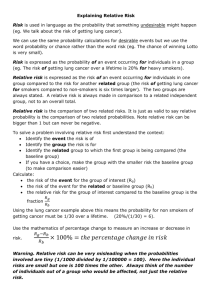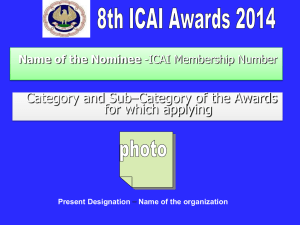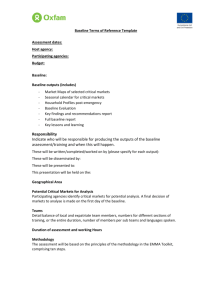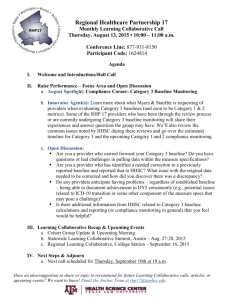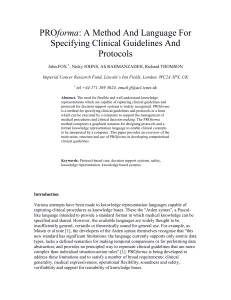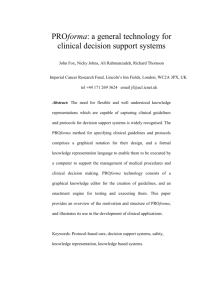Monitoring and evaluation plan proforma This form is designed to
advertisement
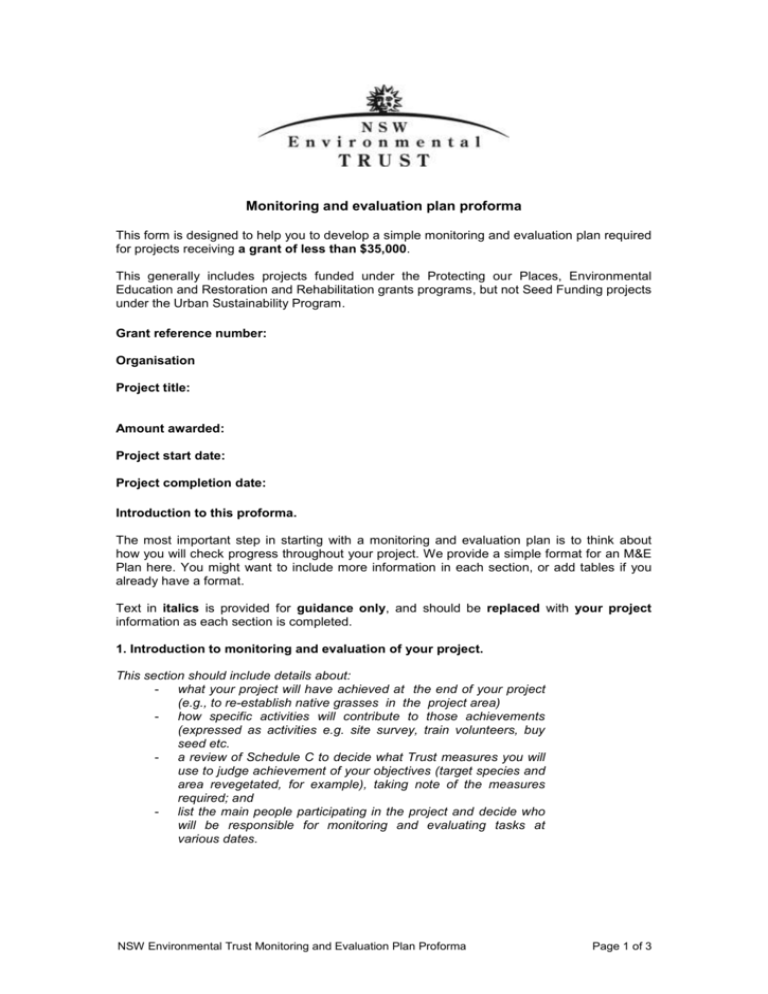
Monitoring and evaluation plan proforma This form is designed to help you to develop a simple monitoring and evaluation plan required for projects receiving a grant of less than $35,000. This generally includes projects funded under the Protecting our Places, Environmental Education and Restoration and Rehabilitation grants programs, but not Seed Funding projects under the Urban Sustainability Program. Grant reference number: Organisation Project title: Amount awarded: Project start date: Project completion date: Introduction to this proforma. The most important step in starting with a monitoring and evaluation plan is to think about how you will check progress throughout your project. We provide a simple format for an M&E Plan here. You might want to include more information in each section, or add tables if you already have a format. Text in italics is provided for guidance only, and should be replaced with your project information as each section is completed. 1. Introduction to monitoring and evaluation of your project. This section should include details about: - what your project will have achieved at the end of your project (e.g., to re-establish native grasses in the project area) - how specific activities will contribute to those achievements (expressed as activities e.g. site survey, train volunteers, buy seed etc. - a review of Schedule C to decide what Trust measures you will use to judge achievement of your objectives (target species and area revegetated, for example), taking note of the measures required; and - list the main people participating in the project and decide who will be responsible for monitoring and evaluating tasks at various dates. NSW Environmental Trust Monitoring and Evaluation Plan Proforma Page 1 of 3 2. How will you measure the progress of your project and how often? Make the Plan. This section application.: - - suggests how you should track progress of your project towards meeting objectives and ultimately, your outcomes, as outlined in your the activities to achieve your overall objective e.g. establishing native grasses in the project area the resources (i.e., materials, staff, etc) needed to measure and monitor activities (diary, cameras, tape measure) measures to be used to monitor project activities. These measures should be directly related to the Trust Project Measures you have chosen. Please use the standard project measures provided by the Trust, and choose which measure relates to your project measure the baseline before you start using the tools and resources needed take baseline measurement when monitoring and evaluation milestones will occur throughout the project (e.g. annually, six monthly) thinking about when you might see some changes who will be responsible for measuring changes in outcomes and evaluating what has been achieved; and who will collate this information for the progress and final reports. Objective Activity Measure (look again at Trust ‘Project Measures’ and choose the ones that best fit your activity) Re-establish native grass areas in project area E.g.: conduct site survey For example: target species for which habitat has improved: Area of connected vegetation established E.g.: regenerate area with volunteer assistance Baseline What are the conditions before you start expressed as a unit of measure and any other descriptions (qualitative) Baseline: Insert number of species occurring on project site before you start the activity. You could list these as well. Tools/ resources required to measure Who is responsible for measuring Dates of monitoring and evaluation Date completed Digital camera, quadrats, survey Bushland Coordinator or M&E officer For example redo site survey every 6, 12 months 5 May 2009 Any observed changes as a result of connectivity Each workshop or activity, evaluate skills Measure changes to area annually 12 August 2009 Baseline: area of connected vegetation on project site in square metres For example : No. of volunteers Number e.g. 30 Attendance book Volunteer For example :area regenerated Baseline: area of project site expressed as a number in square metres Tape Coordinator NSW Environmental Trust Monitoring and Evaluation Plan Proforma Page 2 of 3 3. Plan how your progress will be reported. This section will help you design a framework for the outcomes and evaluation section of you progress and final reports e.g. where information about the project activities will be recorded how will the project be adapted if progress is not occurring. Here is a simple table that brings together your information into a good report. It can be used for your progress and final reports, with updated information from your monitoring plan. Your progress and final report on outcomes will be sent to the Trust as updated Schedule C. The following information will provide additional evaluative information. Your outcomes Project objectives Activity (from table above) Baseline from the table above or Schedule C Changes to the baseline as a result of your activities (date) Date Comment on changes You can paste this from your application form You can paste this from your application form. Example: revegetate site For example: conduct site survey 10 (flora species recorded) Number of additional; flora species recorded – put this in Schedule C, “Yr 1 Achieved’ as well. 6 months after work started Engage volunteers 30 sq mtrs 60 sq mtrs What new species are now in the area, were they planted by you, what is the significance etc. Compare the new list with the original list to see if there are any new species occurring. Heavy rain hampered work Regenerate area 20 sq mtrs 40 sq mtrs Do we need to do anything different in the next six months to achieve the objectives? Ask the group this question at 6 or 12 months and at the end then add or subtract activities. Try to get some more volunteers to achieve our goals 4. Plan how project achievements be evaluated and the results communicated Schedule B of your Grant Agreement outlines some of the outcomes monitoring and evaluation to be included. This is a short list of questions that might be included as part of your evaluation of the project. This section should summarise information on achievements of the project, any risks you might need to manage, how the outcomes will be sustained. Plan how you might answer some of the following questions: (e.g. workshop, questionnaires, interviews with key stakeholders). - did you achieve what you set out to (from the Project Management Plan and Project Objectives), for example, is there any evidence that your target species has fully established - how will information collected be presented (i.e., to the Trust, your community group, other organisations interested in running similar projects, etc) - how will your project team recognise its achievements - did you achieve the changes you anticipated and how were these measured. Were there additional measures you might have used from the start - are there any opportunities to promote your project and achievements (i.e., festivals, publications, presentations at seminars, etc); and what would do differently next time you tried a project like this one. NSW Environmental Trust Monitoring and Evaluation Plan Proforma DECC 2009/100 Published January 2009 Page 3 of 3
